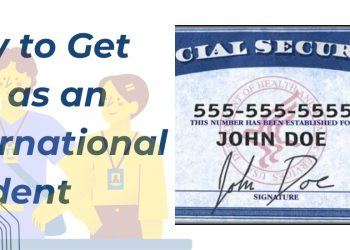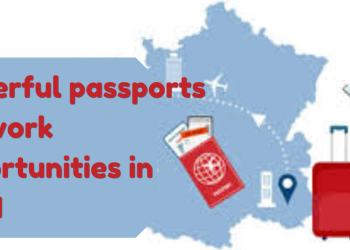The Skills in Demand (SID) visa in Australia has attracted huge attention since the country launched it this year. This is a significant step in adapting its immigration system to fulfill existing workforce needs. The Australian Government introduced the revamped SID visa on 7 December 2024, replacing the previous Temporary Skill Shortage (TSS) visa.
This skills-in-demand visa aims to simplify migration processes, offer greater flexibility for both workers and employers, and expand careers in Australia for international professionals.
What is New in Australia’s Immigration System?
The SID visa builds on the TSS subclass (482). However, it offers a longer stay of up to four years with a median processing time of 21 days if the candidate has an employment opportunity.
The new visa features three distinct streams:
- Core skills stream Mid-level professionals with salaries ranging from AUD 73,150 to AUD 135,000.
- Specialist skills stream: The salary range is higher (AUD 135,000+).
- Essential skills stream: Targeted lower-income workers in critical roles (details to be announced).
Key Updates for Australia Work Visa Applicants:
- Application Fees: The visa application charges (VACs) remain the same as the previous TSS rates:
- Primary applicants: AUD 3,115.
- Secondary applicants over 18: AUD 3,115.
- Secondary applicants under 18: AUD 780.
- Occupation List Refurbishment: The Core Skills Occupation List (CSOL) replaces the old framework. This focuses on specific roles and reduces caveats from 26 to 14. This list applies to SID visa applications and permanent residency pathways, including the Subclass 186 visa.
- Simplified English Language Requirements: Applicants must follow the previous medium-term TSS stream’s English proficiency standards (IELTS 5 overall, with no band below 5). The exemption for inter-company transfers with salaries above AUD 96,400 remains unchanged.
- Lowered Work Experience Years: The government has reduced the work experience requirement from two years to one year for all SID visa applicants. The work experience should be full–time and five years of part-time or casual work are also required during application. If a candidate lacks a qualification, additional work experience years will compensate for that.
- Improved Pathways to Permanent Residency: The changes allow all sponsored employment to count towards the work experience requirements for the Subclass 186 visa TRT stream. There’s also increased flexibility for occupation changes, including promotions, shifts to related fields, or updates to occupation classifications under ANZSCO.
- Employer Obligations: Sponsorship obligations for employees will now end when the individual stops working for the sponsor, rather than when they secure a new sponsor.
Benefits of the Skills in Demand Visa for Migration
The Australian government’s Migration Strategy has come up with many great reforms. In a nutshell, these reforms will offer the facilities below to foreign professionals seeking job opportunities abroad. These reforms include:
- Comparatively much flexible Skills in Demand visa with three pathways proposing a calculated earning for the foreign workers in Australia.
- Simplified labor market testing requirements.
- Straight-forward immigration processes across the system
- More resources to identify skill shortages, workforce needs, and skilled staff.
- A new score-based system for permanent residency through skilled migration.
Approval from the employer will smoother way to permanent residency
- Total work hours spent with an approved employer will count towards the requirements for permanent residency. Visa holders will have access to both self-nominated independent permanent pathways and employer-sponsored pathways.
- Visa holders will also have the authority to change sponsors within 180 days to find a new sponsor.
- New Labor market testing (LMT) requirements will be introduced. The prior criteria to advertise on Workforce Australia have been removed so far.
With those changes, net overseas migration is projected to reach 400,000 in 2023-23 and 315,000 in 2023-24.
The Most In-demand Jobs for Skills Demand Visa
Besides training locals, Australia is currently recruiting foreign professionals to tackle a national skills shortage in various occupations. Though Australia had a Skilled Migration Program, which lists job opportunities in Australia for foreign workers, it was not very efficient. However, the Australian government is now strengthening the system aiming to fill numerous job vacancies.
Nurses and Medical Staff
Registered nurses and medical professionals are on the top priority list for recruitment agencies. Australia is expanding its healthcare sector. Over the last five years, a significant number of medical service-providing centers opened which is continuing this year. With many medical professionals retiring, demand for the medical professionals which includes careers, registered paramedics, doctors and nurses, and personal care workers is higher than at any time before.
Software Programmers and IT
The tech industry in Australia is blooming. Software engineers and developers have many employment openings. Areas of work cover user experience, full-stack development, mobile and back-end design,n and so on. A recent report published on job opportunities in Australia shows that almost nine out of ten job postings advertise for UI/IX designers, software developers, website developers, and other tech positions. This highlights a critical need for tech experts in the Australian workforce.
The Most In-demand Jobs for Skills Demand Visa
Tradesman and Construction
Apart from newbie job sectors, older ones are still in demand. Skilled construction and mechanic/technician people do have a higher demand in Australia. This includes electricians, carpenters, joiners, and plumbers, and likewise. These tradesman job circulars adjust many other required qualifications if work experience is commendable enough. There is also a demand for non-skilled laborers. Professionals in these areas will find it easier to secure work due to the ongoing demand in the sector.
Teachers
Jobs in teaching positions are in big competition with the local and international but opportunities remain available. However, opportunities remain for migrants in teaching, especially in secondary schools in regional areas. As a result, teaching still ranks high on the list of in-demand professions. Female teaching position is a highly sought-after position along with teachers for special needs kids and adolescents. Within this group, the least in demand are inner-city female primary school teachers.
Once you manage your job offer, find out more about moving to Australia and shipping your belongings too.
Summing up, these occupation ceilings do not apply to State or territory-nominated, employer-sponsored, or Business Innovation and Investment visa subclasses. So, if your job is not on the list, don’t worry – other options might still be available.





















